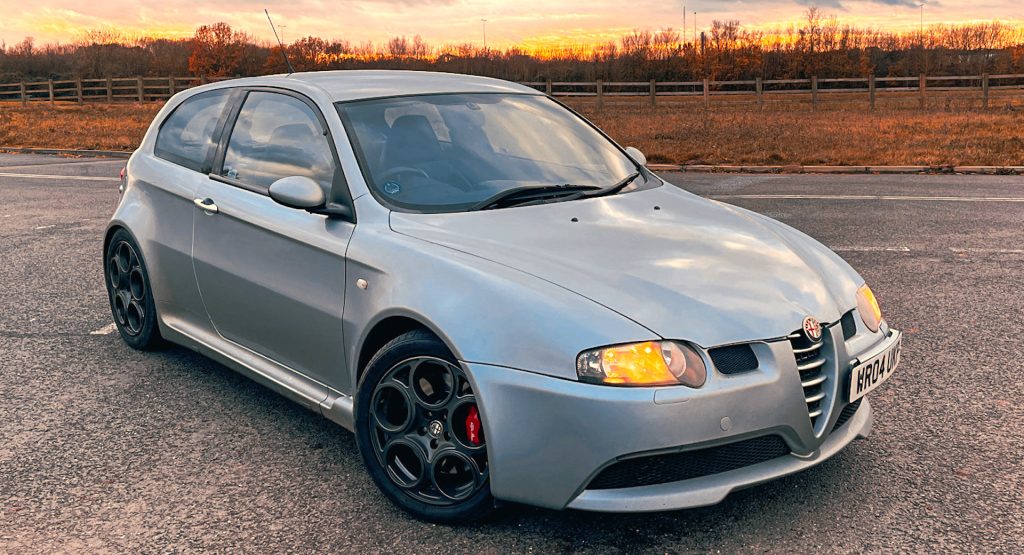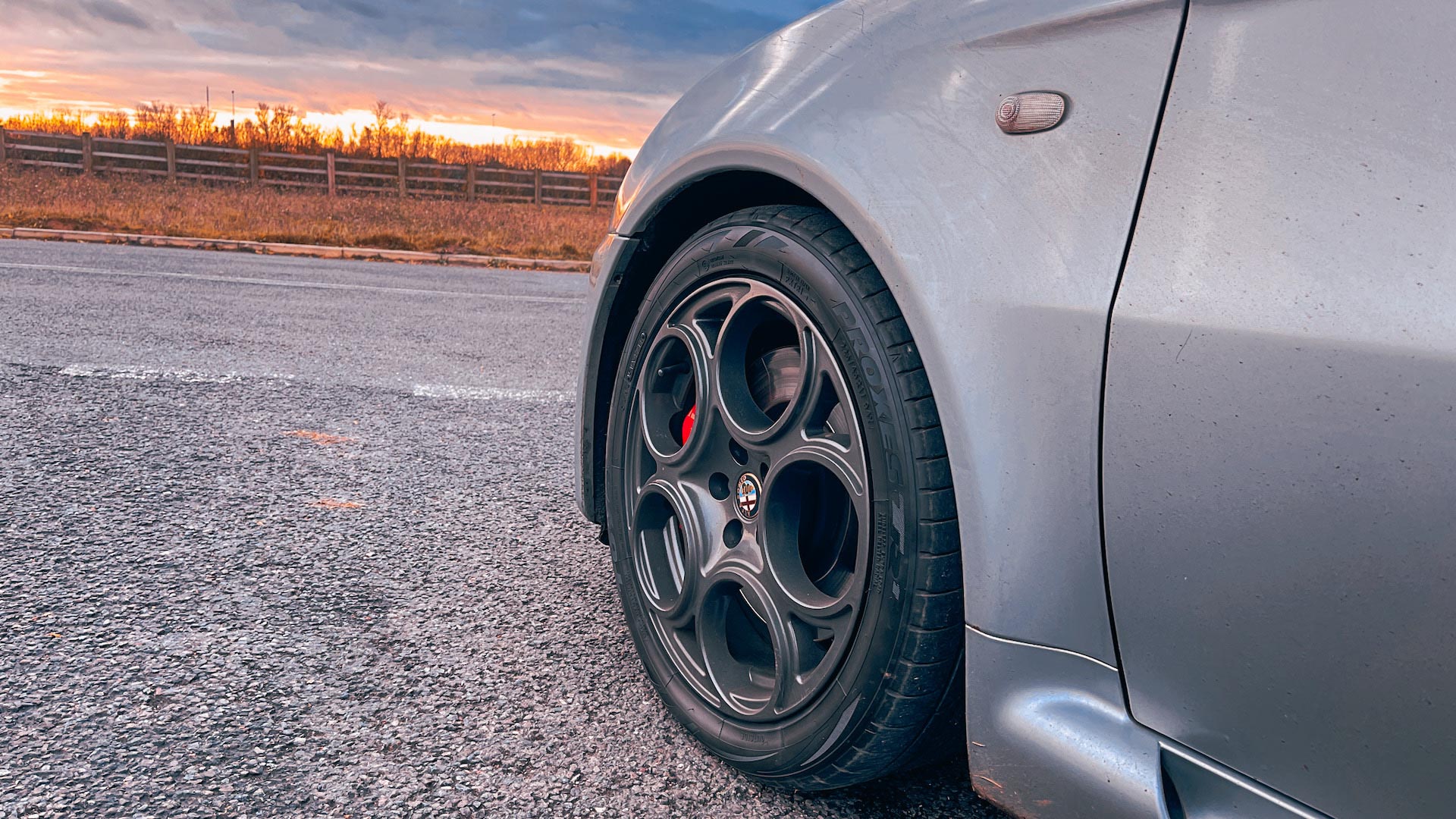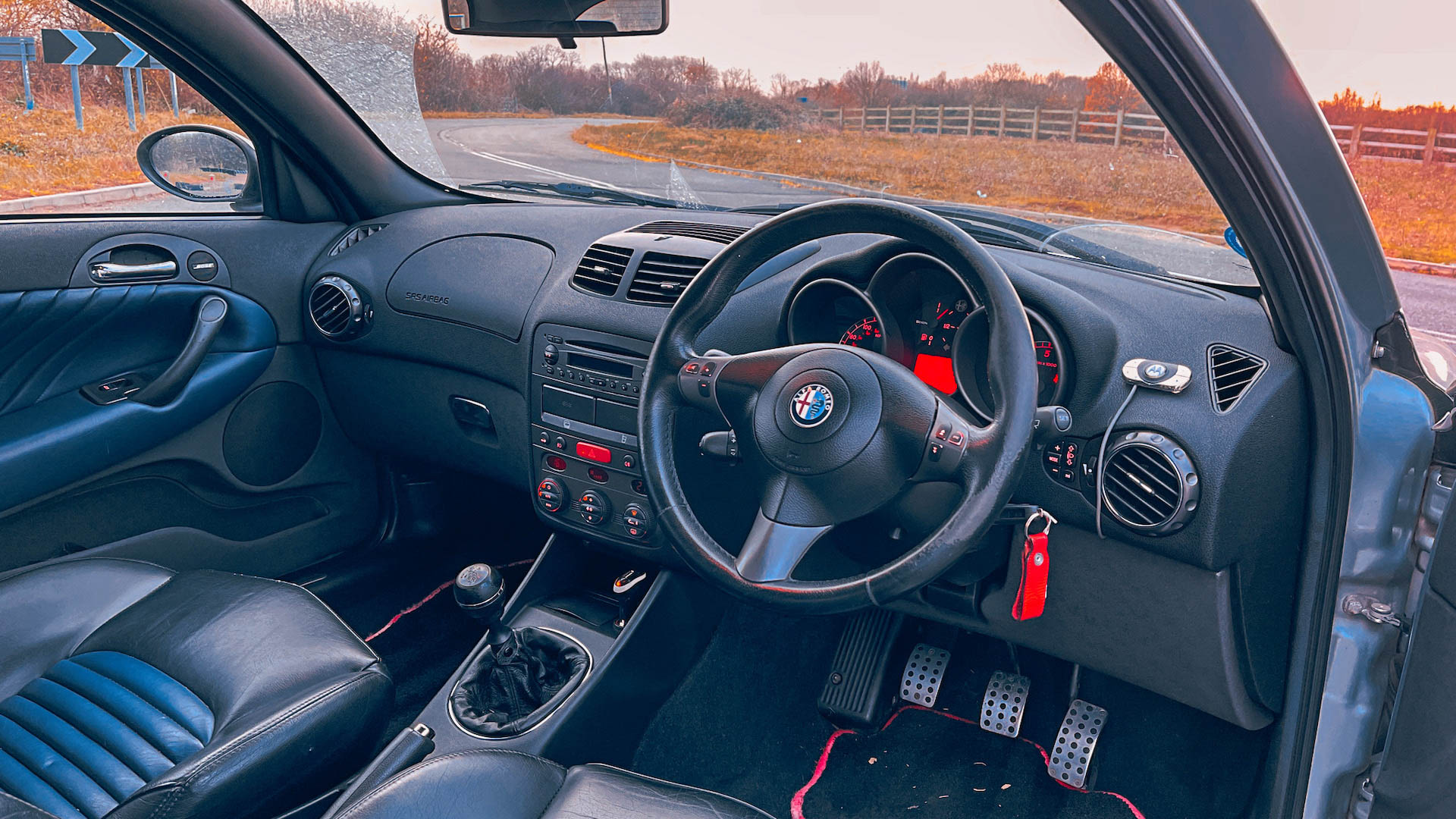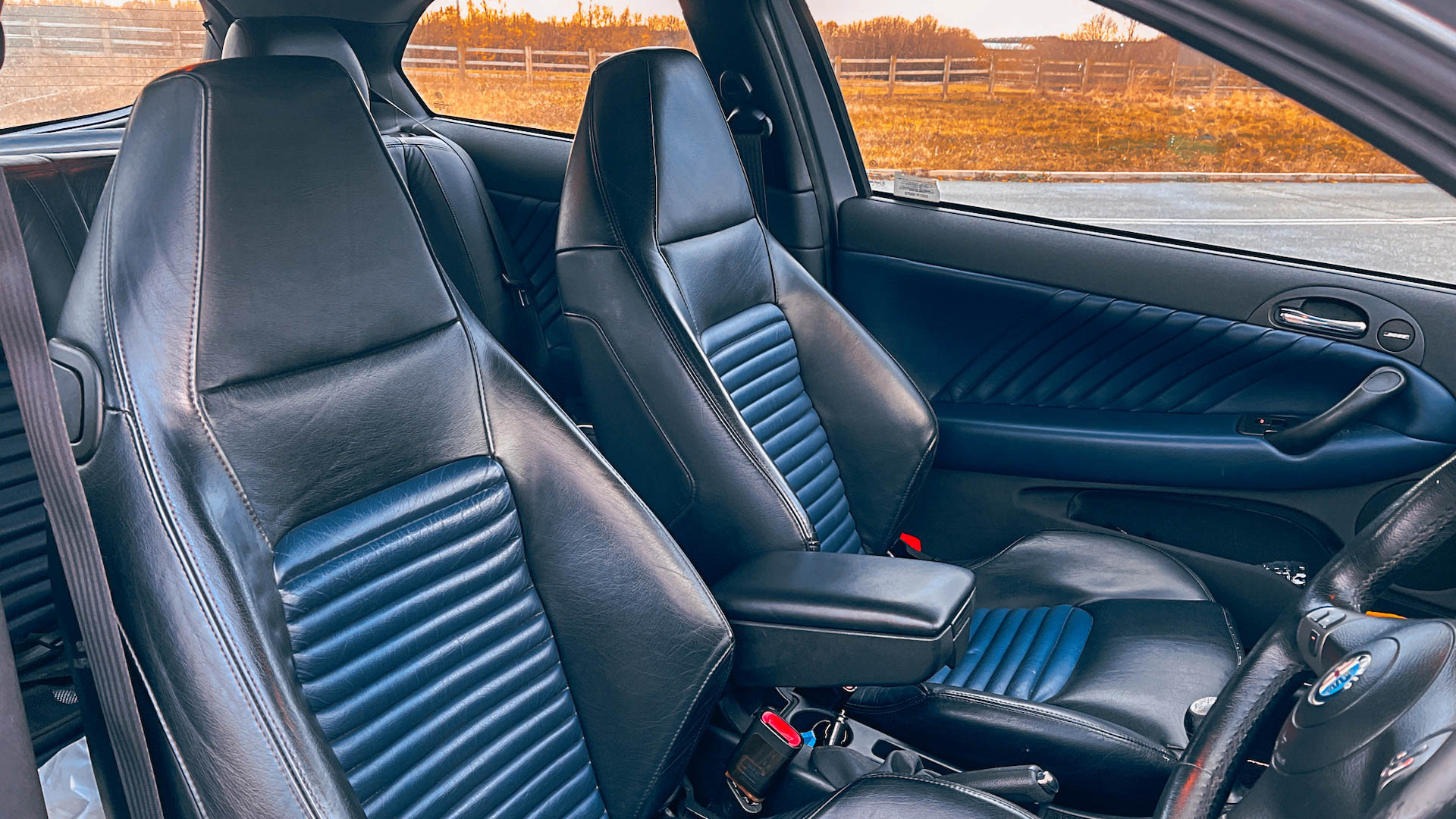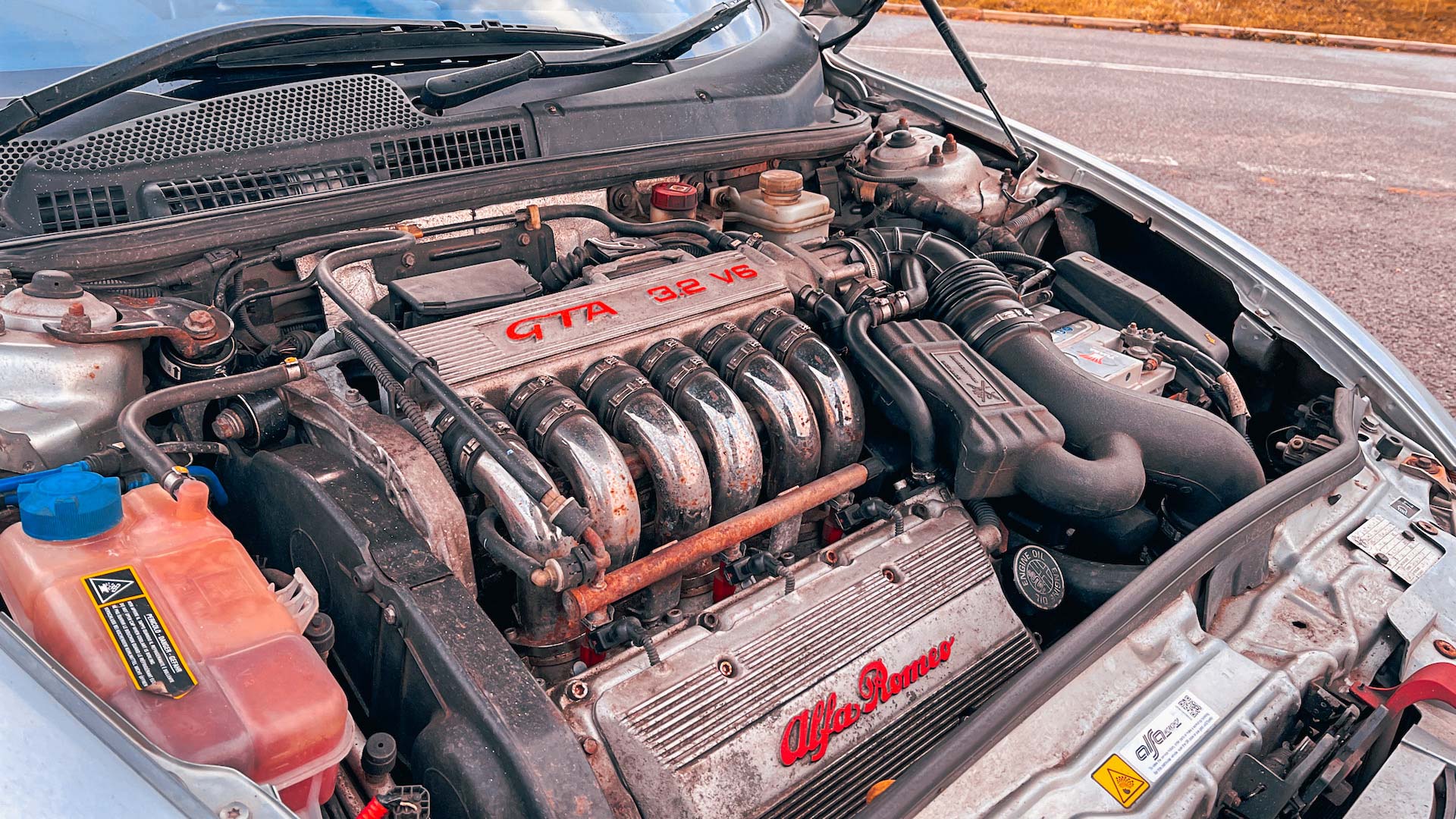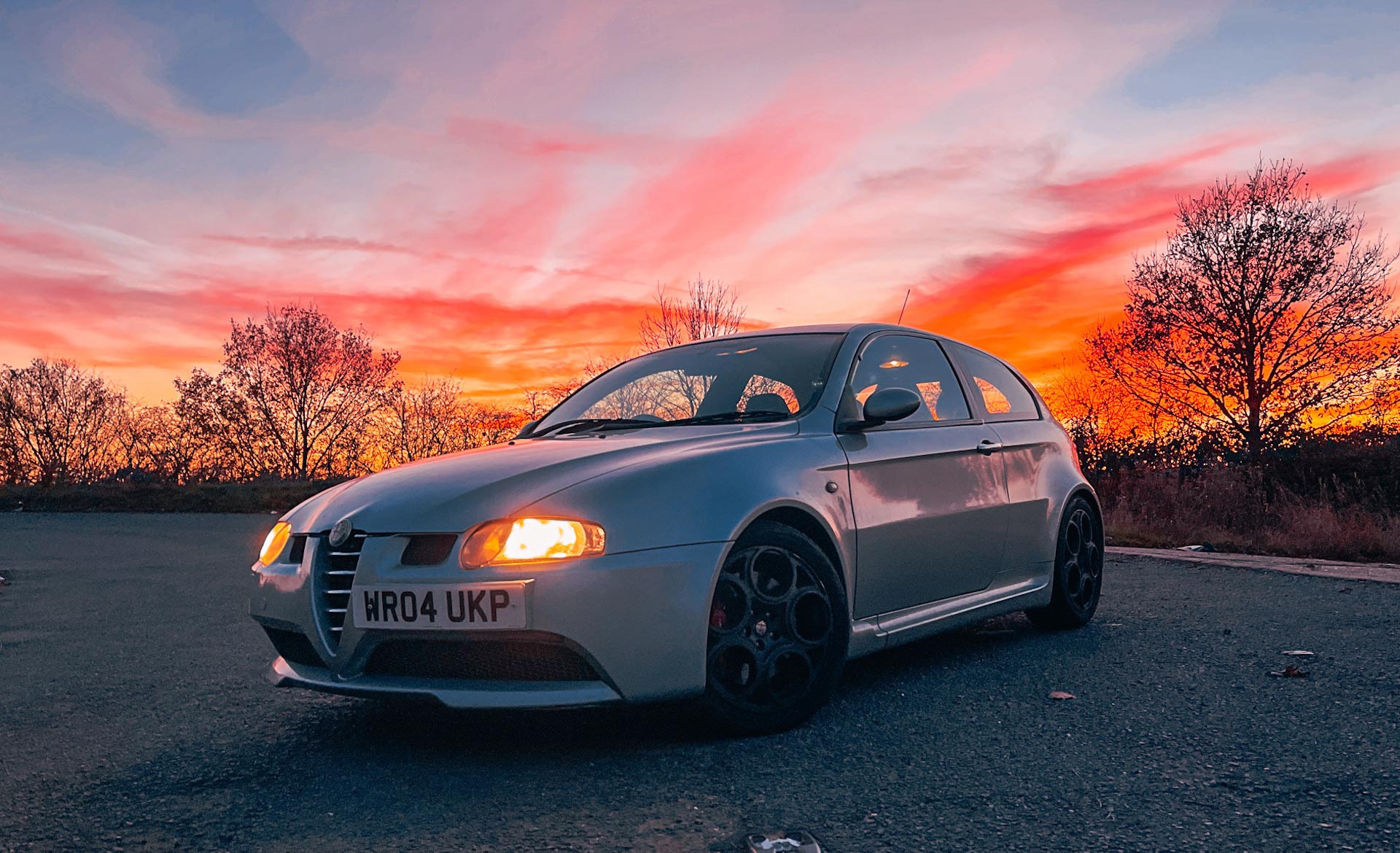Hot hatchbacks don’t often come with six cylinders or look and sound as good as the Alfa Romeo 147 GTA. But despite its undeniable charisma the GTA wasn’t universally loved when new and sold in small numbers.
Time, and improvements to the car courtesy of the aftermarket and passionate owners and specialists, shows the hottest 147 in a different light though. We got behind the wheel of one car to explain why the Alfa Romeo 147 GTA deserves a shot at redemption nearly two decades later.
The Dawn Of The Hyper Hatches
We’re used to hot hatchbacks with more than 400 hp these days, but back at the turn of the millennium, 200 hp was widely seen as the maximum oomph you could put through the front wheels without putting all the hedgerows across the world at peril from the aftermath of massive understeer.
The Mk1 Ford Focus RS changed all that, with 212 hp (215 PS) kept in check by a limited-slip front differential. Well that was the theory; add any camber or bumps and it was a wrestling match – it was lots of fun, though, too. Volkswagen, meanwhile, chose four-wheel-drive to tame the R32 MkIV’s 237 hp (240 PS) VR6 engine, so when Alfa turned up with the 247 hp (250 PS) 3.2-litre Busso V6 with neither of the torque-steer mitigation techniques, eyebrows were raised.
Related: The Cancelled Alfa Romeo Mito GTA Could Have Been Itlay’s Finest Hot Hatch
Predictably, massive understeer was the name of the game in the stock 147 GTA, and though comfortably the fastest of the 147/Focus/Golf trio, as demonstrated by Top Gear in the video above, containing all that power was somewhat beyond the 147 in standard form. Worse still, the open diff had a reputation for breaking and taking the gearbox with it. Still, it looked great, sounded fantastic, and had chromed engine parts. It was deeply flawed, but oddly loveable.
Most cars came with a six-speed manual, though a semi-automatic option was available in small numbers. Never a strong seller, production wrapped up in 2005 after a three-year production run with a smidge over 5000 built, 10 per cent of which were equipped with the SeIespeed paddle-shift transmission.
Built By Alfa, Improved By Owners
A bit of a disaster, then? No – much like other venerated Alfa Romeos, they achieve their greatness with fettling and tuning from enthusiasts and independent specialists some time after they’ve shuffled off the showroom floor. The first major improvement came with the Q2 torque-biasing limited-slip differential, which was introduced on the Bertone GT 1.9 turbodiesel. This fitted the 147 and 156 GTA perfectly, doing much to diminish the car’s inherent nose-heavyness, and really should have been there in the first place.
Most GTAs have been upgraded to the Q2 or Quaife diff as they not only make the GTA better to drive, but cure the propshaft/gearbox detonation problem. Other common upgrades include aftermarket suspension – and this one, owned by a fellow motoring journalist, has had an Eibach Pro-kit coilover suspension kit fitted, as well as thicker anti-roll bars and EBC Brakes Yellowstuff pads. Most 147 GTAs you’ll find will have at least the Q2 diff and an aftermarket suspension setup.
Behind The Wheel
It really is a lovely place to be; look at that sculpted dash binnacle, the plush two-tone leather seats and a just-rightly sized steering wheel. This car’s owner has prioritized mechanics rather than aesthetics as he nears 90,000 miles (144,840 km) after five years’ ownership, but it still feels very much the mini-Maserati, only with far more leg and arm space than any Modena machine of the same era.
Fire up the 3.2-litre V6 and there’s a refined low burble – this car has a Regazzon stainless steel exhaust. It’s not quite as expressive as other systems, but it still sounds mean at tickover. As I trundle out in search of better roads, it’s surprising just how sharp the steering is. Just 1.75 turns lock-to-lock give it Ferrari-like sharpness at speed, and an oil tanker-sized turning circle when not.
The suspension on this example is similarly pointy at low speeds, but the standard suspension was hardly comforting. The owner assures me the poor low-speed ride is worth it once past a national speed limit sign…
Related: Should Alfa Romeo Build An Electric Giulietta Hot Hatch From Lancia’s Reborn Delta EV?
It’s still firm when the numbers on the speedo get naughtier, but the big change compared to the standard car is just how much more connected it feels. The standard GTA felt somewhat remote, and during mid-corner bumps the steering would lose all feel at all – not what you want in a car with all its weight in the nose. Though it’s been a few years since I drove a stock GTA, the suspension kit seems to have worked wonders, bringing a much greater depth and clarity about what’s happening through the steering wheel.
You really can feel the limited-slip diff doing all the hard work, wrenching the car through corners at speeds that would leave the standard car talking to livestock in a field. It lacks the sharp nuanced pliancy of a RenaultSport Clio or Megane, but as the owner says, that’s really not the point. It’s all about the big silly grin it puts on your face, rather than po-faced chassis acuity. And it feels almost unstickable in the dry, even on full throttle, thanks to that diff. Your neck muscles feel like giving up before the front wheels do.
Six Appeal
But this really is a car that’s dominated by the engine. Its 247 hp might not seem very much but it’s fairly light compared to today’s hot hatches at around 1,300 kg/2,870 lb. It certainly knows how to use those horses. The V6 revs to 7000 rpm and sounds absolutely glorious when you do. You’ll hit 62 mph (100 km/h) in 6.3 seconds according to Alfa, though I remember recording 5.9 seconds to 60 mph (96 km/h) with an original test car back at Autocar in 2004, and that was without the help of an LSD. Top speed? A then-serious, and still decent, 150 mph (241 km/h).
The thing that’s perhaps surprising is the torque. This may be a high-revving naturally aspirated hot hatch but it’s got a walloping thump of torque in gear, which, because it’s not turbocharged, means you can enjoy all the revs up to seven large. From 50-70 mph (80-113 km/h) takes around three seconds, which gives the car a real hooligan edge. With such a broad torque range (as apposed to a turbocharged hyper hatch), the GTA feels alert at all times, ready to sledgehammer the horizon.
Fancy A Piece Of That Action?
Well, why wouldn’t you. The biggest stumbling block for American and Canadian audiences is that the youngest 147 GTA is still a few years away from the 25-year rule, but we know of at least one 147 GTA in the USA at the moment.
The problem for those markets that can access the GTA is accessing a supply of parts. Too new to be a classic and too old to have much on the shelf, there are several parts that are no longer available. The most troubling of these are the main ECU and the body computer. The former can fail due to a melted capacitor (thanks for mounting it on top of the engine, Alfa), and costs £2000-4000 ($2600-$5200) for a replacement, if you can find it. Aftermarket solutions are available, but will cost around the same.
These aren’t cars that like being sat around outside, and need regular use. Cambelts need changing every five years, and that’s an all-day job that’ll set you back £1000 ($1300) at a specialist. With so much power and weight going through the wheels, tire wear is high. Add the LSD, and you can burn through a set of tires in 4000 miles; track-friendly ones like the ones on this car can be balder than Jeff Bezos’s noggin in less than half that. The good news is that Stellantis is carrying more parts for the car now – for example, you can order fresh front and rear bumpers direct from FCA Heritage.
Related: Alfa Romeo Considering Quadrifoglio Variants For Future Electric Models
If we haven’t put you off, you’re probably wondering how much this pocket GT is going to cost you. A decent UK manual 147 GTA will cost from £9000-15,000 ($11k-$20k) with less than 100,000 miles (160,000 km). In Europe, a sub-20,000km (9k miles) LHD car will cost up between €35,000 to €50,000 ($40k-$62k), but good cars with less than 150,000 km (93,000 miles) on the clock will cost between €15,000 and €25,000 ($17k-$28k).
Summing Up
The Alfa Romeo 147 GTA isn’t for everyone. It’s not a nuanced, beautifully poised hot hatchback, nor is it as solid and dependable as its great period rival, the VW Golf R32 MkIV. And a modern track-focused machine like the latest Honda Civic Type R would toast it on a circuit or a twisty road.
That’s really not the point. As the owner of this 147 freely admits, if he had to use the GTA every day, he’d hate it – the R32 is a better daily, but doesn’t hold a candle to the Alfa for visceral thrills. As a practical weekend dawn thrash car, it’s a sledgehammer of adrenaline. Yes, it’s flawed, yes it’s not the easiest or cheapest car to run and yes, it will be out-handled on track by most things. However, flawless things are rarely interesting for very long – the GTA is always an event, whether at 30 mph or 130 mph.
The mixture of sharp steering, high-revving naturally aspirated engine and abundant mid-range torque means it’s an engaging car to drive. And that V6 engine gives it charm and personality that’s missing in many modern hot hatches, no matter how fast they can lap a circuit.
It’s the kind of car you step from sweaty and giggling, and mildly nervous that you’ve been a little bit too naughty. It’s a big dollop of fun, a great raised middle finger to boring cars. And isn’t that what hot hatches should really be about?




